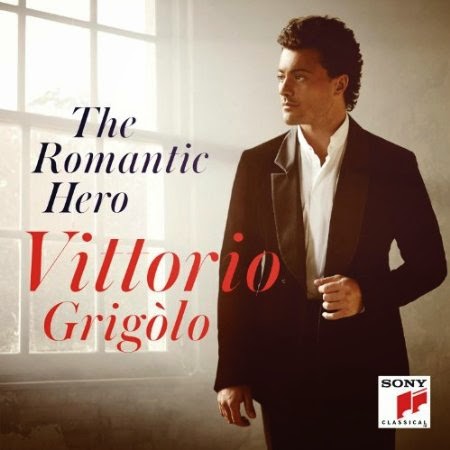His Six Sonatas, op.27 for solo violin
certainly do contain much that is extremely virtuosic but there is often a
deeper quality to them, something which is brought out by the Canadian
violinist, Karl Stobbe www.avie-records.com/artists/karl-stobbe
, on a new recording of these works from
Avie Records www.avie-records.com
 |
| AV2310 |
In four movements, Sonata
No.1 in G minor ‘for Joseph Szigeti’ opens with Grave where, despite the
brilliant violinistic display of the opening, this performance expertly
balances the poetic with the virtuosic. The Fugato
develops some terrific layers of contrapuntal sound before the Allegretto poco scherzoso where Karl
Stobbe weaves the many strands of musical invention with lovely phrasing, fine
clarity and much feeling, providing some lovely colours from his instrument. Stobbe
throws himself straight into the Finale:
Con brio, keeping up the pressure throughout in playing of tremendous
virtuosity.
In the first of the four movements of the Sonata No.2 in A minor ‘for Jacques
Thibaud’, Obsession: Prelude, who
will not recognise the Bach quotations combined with equally well known Dies
Irae plainchant theme, skilfully woven by Ysaÿe and equally skilfully played by
Stobbe. Again Stobbe’s fine playing and clarity of texture brings many rewards.
The dark Malinconia sees Stobbe
revealing the intense emotions of this movement and, in juxtaposition with the
first movement, revealing an emotional instability overall. The Dies Irae
appears again at the end. It is the Dies Irae that is worked over in the third
movement, Danse des Ombres: Sarabande.,
a set of variations on the plainchant, surely something of a wonder with its
combination of violin technique and emotional power shown to perfection here
and broadening beautifully at the end. There is virtuosity galore in the
finale, Les Furies, with the Dies
Irae again seen appearing in many guises, using many violinistic techniques,
superbly played by Stobbe.
The single movement, Ballade:
Lento molto sostenuto – Allegro in tempo giusto e con bravura, of the Sonata No.3 in D minor ‘for George Enescu’
opens slowly before building in complexity and virtuosity. Here Stobbe not
only sails over the difficulties with apparent ease, he provides so many varieties
of tone that add so much, making this much more than a mere showpiece. Stobbe’s quieter passages are full of intimate
detail. But what a showpiece it is nevertheless.
There are three movements to the Sonata No.4 in E minor ‘for Fritz Kreisler’.
Allemanda has a
flamboyant opening that soon leads on to the main Allamanda theme with Stobbe bringing much fine technique. He weaves
a lovely poetic, gentler middle section before allowing the music to unfold
beautifully in the later stages. Continuing the dance theme the second movement
is a Sarabande that opens with the
theme picked out pizzicato before gently developing in a lovely, melancholy
melody. There is a fine sweep and breadth from Stobbe in the opening of the Finale before the
music rushes forward, furiously, but with so much fine clarity. The middle
section is beautifully phrased before a terrific final section.
Sonata No.5 in G
major ‘for Mathieu Crickboom’ has two movements. In L’Aurore there are some lovely dissonant harmonies in the slow
opening, brought out so finely by this violinist. Stobbe’s view that this
sonata is very French is absolutely right, particularly in the way that he
conjures up so many French colourings and textures.
Danse rustique is
a terrific dance movement made all the more difficult by all the layers of the
music. There is a rather quixotic middle section before a runaway ending in
this really fine performance.
The single, Allegro giusto non troppo vivo movement
of the Sonata No.6 in E major ‘for
Manuel Quiroga’ is full of Iberian
warmth and flamboyance with Stobbe bringing a lovely feeling of improvisation
to the little flourishes and details. Virtuosity sits side by side with Spanish
rhythms making this a fine end to these sonatas.
To take all six of these sonatas into the concert hall, as
Stobbe has done, is a considerable achievement and challenge and a strong
foundation on which to take these works into the studio. These are
exceptionally fine performances that combine virtuosity with moments of great
poetry.
The recording from St John’s Anglican Church, Winnipeg,
Manitoba, Canada is rather close but extremely detailed. There are informative
notes by Karl Stobbe.








